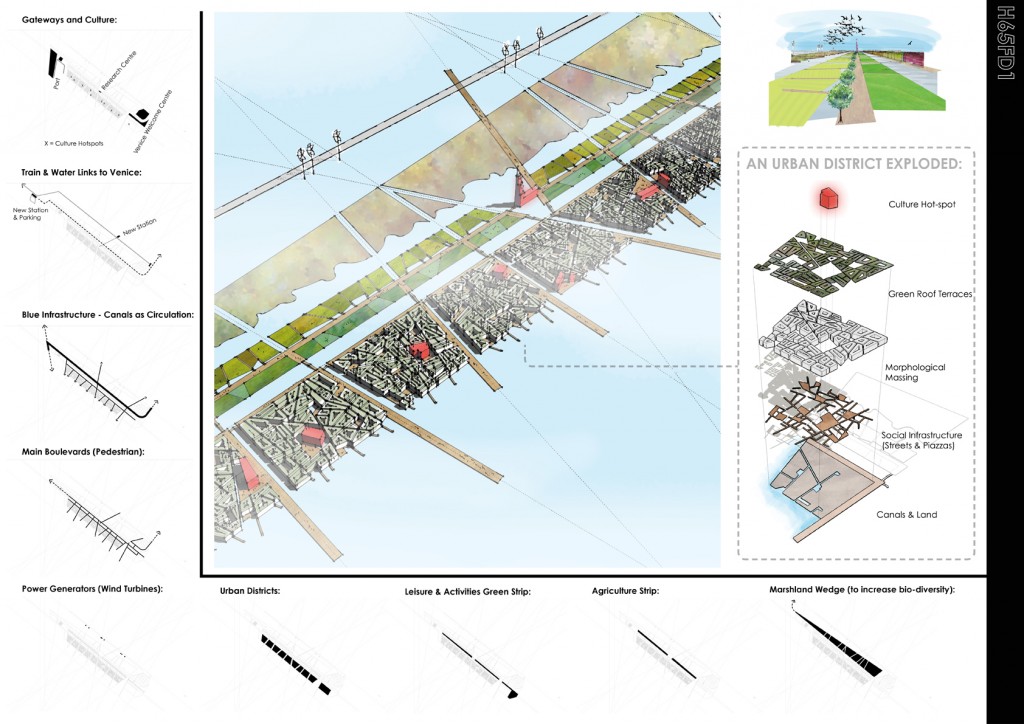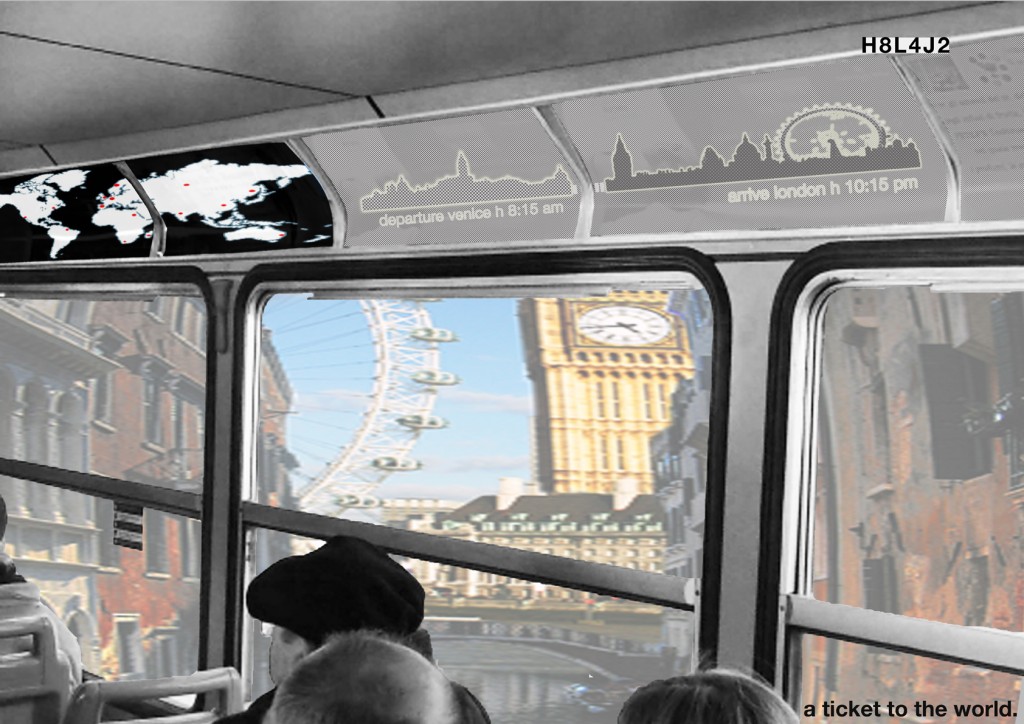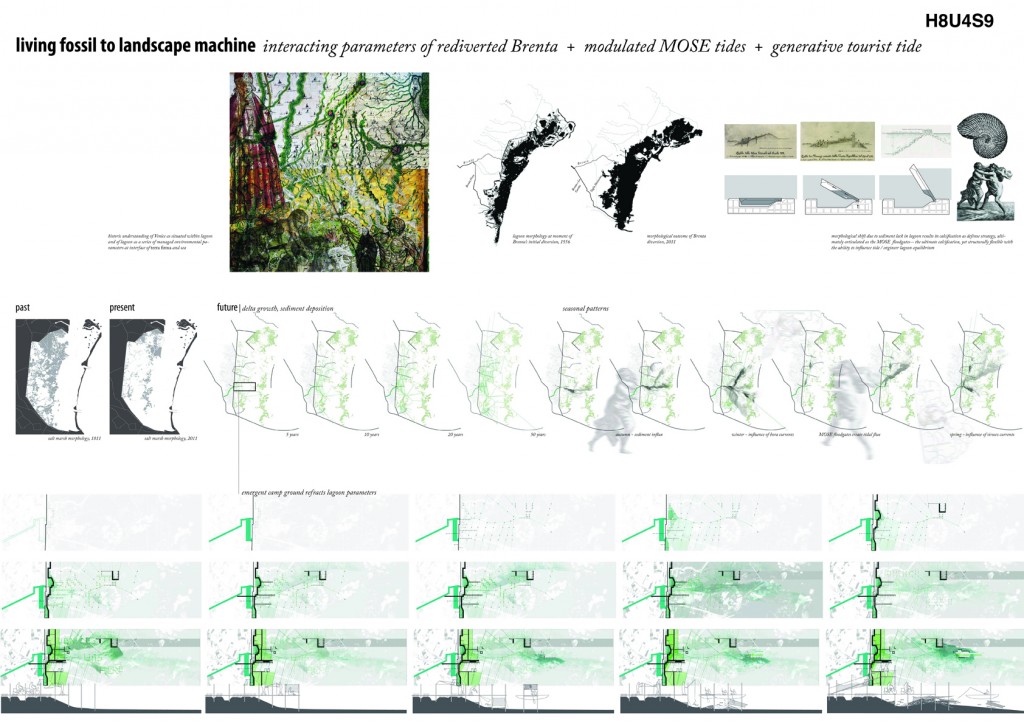Info:
Title: Ecological games without end - Code: H8U4S9Contest: Venice / 2011
By: S. Cancienne / J. Lynch / J. Sieweke
Views: 3947 Likes: 7
Votes:
BJARKE INGELS7 NERI OXMAN7 ELENA MANFERDINI4 MARIA LUDOVICA TRAMONTIN4 BOSTJAN VUGA45.2
Ecological games without end
Ecological games without end Venice is intrinsically bound to the ecological processes of its site, the Lagoon. Our proposal extends the geography of Venice, conceptualizing the city as a nexus within the Lagoon’s complex, threatened territory. In reading the Lagoon as a series of relationships, the proposed intervention takes the form of principles for operating architecturally within the landscape at multiple scales – new rules for Venice’s ecological game without end.
rules / venice’s games without end Venice’s Lagoon should have vanished centuries ago, silted by alpine sediments into terra fi rma or swept away by the tides of the Adriatic. Without careful management of its geomorphological parameters—sediment infl ux from its rivers and the erosive infl uence of the sea—the dialectic is lost and the Lagoon will disappear. Venice’s empire and identity were founded upon the management of this balance between water and land, tides and sedimentation. Originally, the Lagoon’s equilibrium was engineered through fi ne-grained, ephemeral infrastructures—wooden piles and reed fi shing mazes—a kit of resilient moving parts that directed erosive currents or trapped sediments as they generated an economy and aligned with cultural practices. During the Renaissance, the threat to the Lagoon by sedimentation from the rivers Brenta, Sile, Dese and Piave was addressed through the application of a rule-based system of 11 hydrological principles to the landscape. Th ese ruled played out at various scales—major rivers were re-routed and drainage patterns were geometrized across terra firma. Th rough the application a logic to the landscape, the balance between ground and water within the Lagoon was disrupted—with the deprivation of the Lagoon of its sediment, the dialectic was lost: the city began to slowly sink. Six centuries later, the eff ects of the Lagoon’s sediment loss and erosion are felt within the city—the Lagoon’s deepening bathymetry and exaggerated tidal channels cause increasingly frequent acqua alta. Th e problem of the Lagoon is a problem of sediment deprivation, catalyzed by the introduction and accreted eff ect over time of 11 Renaissance principles, but the solution has, for centuries, been one of a calcifi ed edge—the hardening of seawalls, taking the form of the rising murazzi and, ultimately, the MOSE fl oodgates, which signify an attempt at absolute control over the eff ects of the tide. Current process for rebuilding the Lagoon at a smaller scale, in their form and materiality, further the calcifi cation process.
tide / lagoon as landscape machine
Our design involves a cross-scalar proposal for the management of the Lagoon as a series of relationships with the intent to rebuild a balance between the environmental, economic, and cultural forces that have historically defi ned and sustained it. To reintroduce sediments to the Lagoon, the Brenta River is rediverted through its originally course and into diff erent parts of the southern Lagoon through smaller diversions. Th e diversions (and sediments) are fl uctuated to strategically distribute sediment throughout the southern Lagoon, mimicking the shifting fan of the river deltas that originally formed the Lagoon’s ground.
The timing of these fl uctuations is synchronized with the seasonal water and sediment levels of the Brenta and with the currents caused by seasonal winds, the Bora and Sirocco, which steer and accelerate sediment deposition. Th e MOSE floodgates, despite their symbolic function as the ultimate murazzi, also have an ability to manipulate the tidal conditions of the Lagoon. Th e MOSE is used in concert with the fl uctuating Brenta diversions to create optimal tidal conditions and increase the potential of the wind as a vector (infl uence of wind overriding infl uence of tide when the fl oodgates are closed). Th e MOSE gates and Renaissance river diversions, symbolic of environmental stagnation, are now made fl exible and, together, they can be seen as forming a complete landscape machine, capable of striking ideal relationships between the opposing forces of sedimentation and tides that defi ne the lagoon as a dialectical landscape.
tour / emergent ecological interfaces, tourist tide as regenerative environmental parameter
The fi rst Venetians were amphibious, creating land out of shifting water and ground—their logic and techniques are here reinterpreted. At a small scale, a series of ephemeral infrastructures are introduced to the Lagoon to refract (intensify or dissipate) the eff ects of its modulated parameters while, additionally, regenerating historic Venetian urbanisms and channeling the tourist “tide” as a productive, vs. degrading, force. Following a pre-Renaissance logic, a kit of small, redundant components (biodegradable materials designed as ephemeral infrastructures—similar the Lagoon’s original fishing mazes and wooden piles) is used to direct sediments and currents, accelerating regenerative landscape processes within the Lagoon. Because it is too expensive for most tourists to inhabit Venice, these components take the form of a camping kit—a series of piles (stakes for anchoring a boat or pitching a tent) and geotextiles (biodegradable sleeping bags, mattresses and tent materials)—and a manual (set of rules). Th e camping site and its patterns change with the seasonal dynamics of the Lagoon and in anticipation of the Brenta’s sediment infl ux, but the kit and rules remain consistent; complexity arises out of a basic set of rules and materials that reacts to the Lagoon’s changing parameters. This is the opposite of “leave no trace behind” camping—the kit of camping parts is purchased by tourists and the tourists rebuild the Lagoon by camping and leaving their camping materials to help build ground. In this way, the nature of tourism becomes constructive vs. degrading.
Info:
Title: Ecological games without end
Time: 7 giugno 2011
Category: Venice
Views: 3947 Likes: 7
Tags: Adriatic Sea , Brenta , J. Lynch , J. Sieweke , MOSE , MOSE Project , Renaissance , S. Cancienne , Sediment , Tide , Venice








